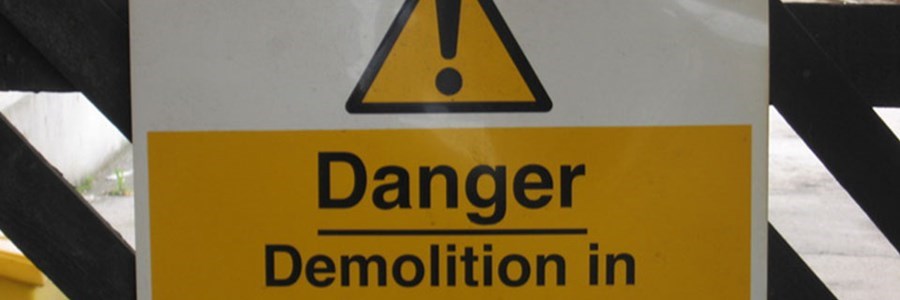
Bring it down right

Contractors must:
Comply with other relevant health and safety requirements.
Ensure that a trained and competent supervisor (Site Safety Supervisor, SMSTS / SSSTS or equivalent) is appointed to manage the works under their control and is available at all times on-site.
Ensure that prior to any demolition work commencing a detailed demolition asbestos survey will be completed and reviewed by the contractor. Where notifiable asbestos is identified a notification will be submitted to the HSE / HSENI 14 days prior to works commencing and a licensed asbestos removal contractor will remove the asbestos. Make other necessary notices to local authorities unless advised that alternative arrangements have been made by McLaughlin & Harvey.
Comply with the principles enshrined within HSG47 ‘Avoiding danger from underground services’ and GS6 ‘Avoiding danger from overhead power lines’. Provide details of all known and surveyed utilities / services along with details for their safe isolation and / or removal and liaise with local petroleum officers concerning the disposal of any fuel tanks and their contents.
Detail procedures for dealing with unforeseen circumstances such as the discovery of previously unidentified hazards, e.g. utilities services, suspected ACMs.
Define the sequence and method of demolition and dismantling including any pre-weakening techniques to be used taking into account the stability of adjacent structures and provide details of associated temporary works including drawings and calculations.
Comply with local authority restrictions on noise and dust and provide a wash down facility if appropriate; ensure that wet suppression and run off techniques are used wherever practicable.
Ensure that where diesel powered machinery and plant is used, exhaust emissions cannot build up to hazardous levels.
Define arrangements for the temporary storage and removal / disposal of demolition waste and hazardous waste.
Provide details about the provision and maintenance of exclusion zones to include arrangements for the protection of the site workforce, members of the public and other third parties from falling materials, dust, fumes, vibration etc. and the provision and maintenance of access and egress routes for both pedestrians and vehicles on-site.
Detail phased edge protection planning as appropriate; this must be installed to prevent operatives involved in the demolition process being exposed to a leading edge.
Specify emergency plans including fire fighting arrangements / means of raising the alarm and provide a detailed work at height rescue plan as appropriate.